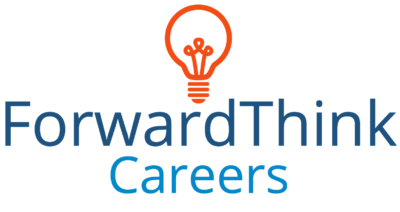

You there…reading this blog post. It’s safe to say you’re active on LinkedIn and are likely conducting a job search…or thinking about it. Maybe you’ve had your LinkedIn profile up for awhile, or perhaps you’re somewhat new to the platform and are still figuring things out.
Either way, it’s important to know that LinkedIn is far and away the most essential social media tool for your job hunt. According to jobvite.com, 94% of recruiters say they use LinkedIn to search for candidates and 79% have made a hire using it.
What you might not realize is how little time you have to make the right impression. When recruiters click on your LinkedIn profile, they generally spend only 10 to 30 seconds deciding whether or not you’re a fit for the position. If you don’t make it an easy YES for them, they’ll likely move onto the next candidate. But don’t despair, every hitch has a fix.
Here are some ways that your LinkedIn profile could be working against you…and how turn that around:
Reason #1 – You Don’t Have a Profile Photo, or It’s Communicating the Wrong Thing
Did you know that employers are 11 times more likely to click on your profile if you have a photo? So if you don’t currently have one, time to get cracking!
But not just any photo will do. Unlike Facebook, Instagram and other social media sites where it’s perfectly acceptable to post silly, creative photos — or one from happy hour last Friday — you need a professional-looking photo for LinkedIn. Recruiters want to picture you in “work-mode.”
You don’t have pay a professional photographer to take headshots, but your photo should meet these requirements:
> You only — no stray arm around your shoulder from someone who’s been cropped out.
> Framed from the shoulders up.
> Looking at the camera and smiling! You want to appear warm and engaging.
> Well-lit with a simple background. If you can’t find the right lighting and background inside, go outside and stand in front of a plain wall. (Brick adds a nice touch.)
> Professional dress. You don’t have to wear a business suit — a button-down shirt, simple sweater or blouse suffices. Avoid t-shirts, logos, tank tops, strapless tops, or anything else that wouldn’t pass most companies’ dress code.
Reason #2 – Your LinkedIn Profile Isn’t Complete or Publicly Visible
When I was recruiter, I can’t tell you how many times I looked up a candidate only to find a half-written profile or one where only their name and headline was visible. It was impossible for me to make an informed decision on these candidates, and it made me wonder how serious they were about their search.
So before going “public,” take the time to complete all the main areas of your profile: headline, summary, work experience, skills and education. The more complete your profile is, the higher you’ll rank in recruiters’ search results when they’re sourcing candidates. LinkedIn lets you know your level of completeness — shoot for “All-Star” status.
Once you feel like your profile showcases you in the best light and is targeted to positions you want to be considered for, review your privacy settings and make sure your full profile is visible to the public. (This is different from the setting that notifies your network every time you make a profile change. Keep this in the “off” position.) Having a public profile allows recruiters to determine if you’re a suitable fit for a role without first having to send you a connection request.
Reason #3 – Your LinkedIn Profile Includes Everything but the Kitchen Sink
When you’re doing a job search, it’s tempting to use all that real estate on your profile to list every skill set and achievement and include every job you’ve had since high school. You think, “I’ve really got to impress these recruiters and show them everything I’ve got.” But being a jack of all trades just muddles your branding and makes it hard for recruiters to quickly assess what you’re right for.
A better approach is to get laser-focused on the type of role you’re after and build your profile around it. Make sure to repeat relevant keywords throughout your headline, summary, skills and experience sections to increase your search engine optimization within LinkedIn.
For example, if you’re looking for a marketing specialist position and you’re a whiz at social media ad campaigns, lead generation, and email marketing, then pepper (not douse) these keywords throughout your profile.
Make sure the experience section is written in an easy-to-read, bullet-point format and focuses on accomplishments, instead of just listing tasks. Your summary can include your general title, industry, years of experience, the problems you love solving and the ways you solve them. It should have a warm and conversational tone.
Reason #4 – You Have a Limited Number of Connections
Yes, I get it…it feels like our entire self worth has been reduced to how many Facebook fans, Twitter or Instagram followers we have. It just doesn’t seem right. And LinkedIn is no better by advertising how many connections we have right at the top of our profile. But when it comes to having success in our job search, a high number of connections really can help you. How?
First of all, the more connections you have, the higher you rank in search results when recruiters are looking for qualified candidates. Also, a large number of first-degree connections translates into an even greater number of second-degree connections. And these second-degree connections can be a resource as you create a target list of companies you’re interested in working for.
While it might turn out that none of your first-degree connections work at these companies, there’s a better chance that one of your second-degree connections does. If you can ask the person you know in common to make an introduction to that second-degree connection, you might end up with a potential referral for a plum opportunity.
How do you build up a greater number of connections?
First, start out by exhausting everyone you know: friends, relatives, current and former colleagues. Next, join relevant LinkedIn groups based on your industry and geographic location. It’s less intimidating to send a connection request to someone who’s a member of the same group and likely has a similar professional background to yours.
Lastly, join professional associations and Meetup groups in your city and attend their events. Trade business cards with people you chat with and then connect with them on LinkedIn after the event. You’ll watch your number of connections increase quite a bit in a short amount of time.
Reason #5 – You Don’t Have Any Recommendations
Yes…I know…AGAIN with the social proof. It’s understandable to want our work accomplishments to speak for themselves, but with the proliferation of online reviews on every site, third-party endorsements really do make a difference.
And while it’s true that HR usually won’t check your references until they’re about to make an offer, having recommendations on your LinkedIn profile can give you an edge. Think about it, if you were a recruiter and were reviewing two candidates’ profiles — one with no recommendations and the other with a handful of well-written recommendations from gracious colleagues and satisfied clients, who would you be more likely to call in for an interview?
The nice thing is that LinkedIn makes it easy to request a recommendation from someone. You can write a personalized note along with your request. You also have the opportunity to suggest edits before posting the recommendation to your profile.
So, as you can see, having a clear, targeted, eye-popping LinkedIn profile can make the difference between fast-tracking your way to an offer and idling in job search purgatory. Righting these profile “wrongs” can take a little effort, but the payoff will be well worth it when that first paycheck comes in.



